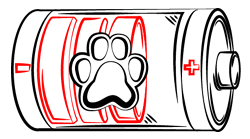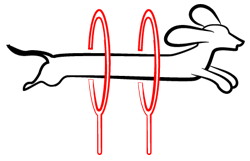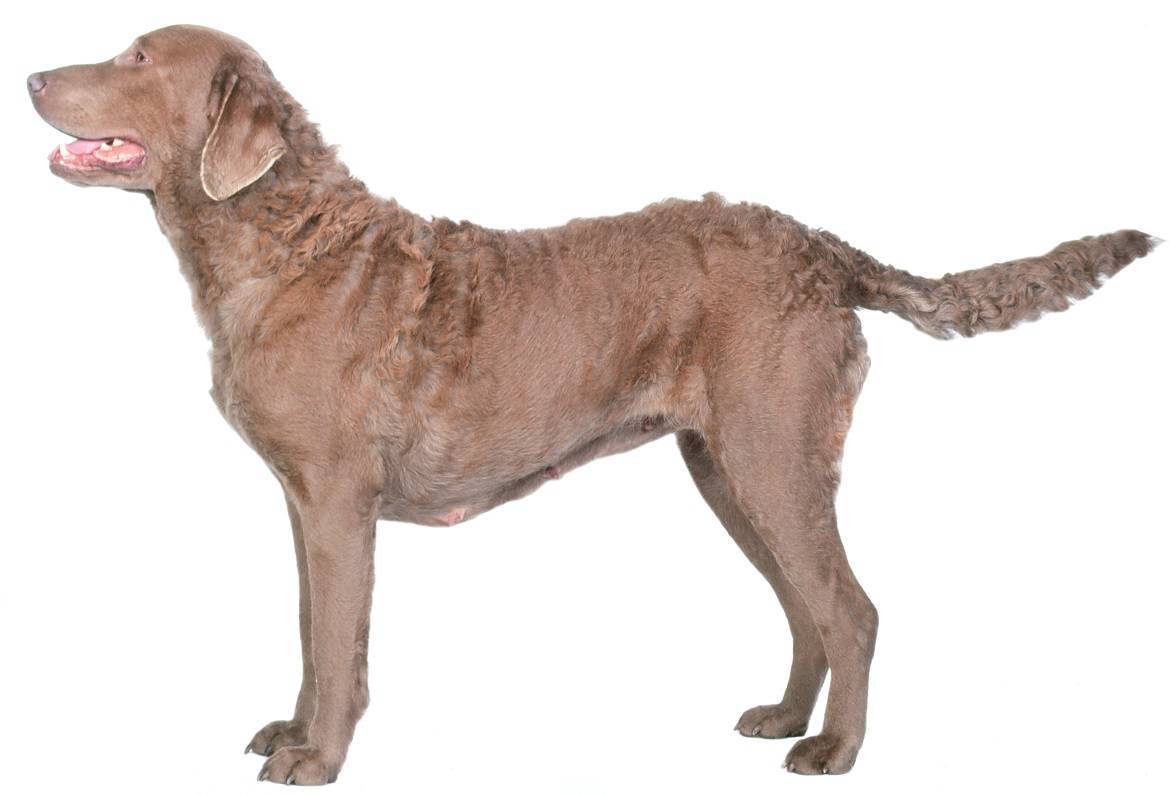
Paws ‘N’ Pups Quickview
Size
| Energy Level
| Trainability
| Paws ‘N’ Pups Rank
|
Characteristics
| Physical Characteristics: Height: 21-26” Weight: 55-80 lbs. Energy Level: Moderate – High | Colors: The American Kennel Club recognizes the Chesapeake Bay Retriever in the following colors:
|
Health & Longevity
Average Life Span: 10-13 years
Chesapeake Bay Retrievers are healthy purebreds, but their large size makes them prone to a few serious health conditions. One of the most prominent health problems that a Chesapeake Bay Retriever faces is a birth defect, known as hip dysplasia which worsens as the pup grows larger. This form of dysplasia occurs when the joint and socket are mismatched and malformed, causing random dislocation and cartilage deterioration. Over time, if left untreated, this condition can result in pinched nerves, a permanent limp, and severe arthritis. Surgical intervention is required to fix the condition.
Other health issues that your Chesapeake Bay Retriever might encounter include:
Progressive Retinal Atrophy
This genetic condition occurs when the retina in both eyes begins to degenerate, resulting in loss of vision. Symptoms might include an opaque lens becoming more prominent in the eyes over time, disorientation, total loss of night vision, and gradual blindness. There is no cure for PRA. But the process is painless and your pup can still have a good life despite the loss of their vision.
Hypothyroidism
This lifelong condition occurs when the thyroid gland releases an insufficient amount of hormones to control the metabolism and other bodily functions. Symptoms include hair loss, lethargy, chronic fatigue, weakness, severe weight gain, and recurring illnesses, like a cold, because of a compromised immune system. Treatment includes hormone supplements and special, vet-prescribed kibble.
Chesapeake Bay Retrievers are also prone to skin allergies, gastric torsion (bloat), juvenile cataracts, and cherry eyes. These purebreds can also develop the same health issues that may plague other dog breeds, such as heartworms, some types of cancer, and heart disease. The average Chesapeake Bay Retriever sports a lifespan of 10 to 13 years.
Temperament & Train-ability
Also known as Chessies, the Chesapeake Bay Retriever is a headstrong and powerful dog with an overall friendly, even-tempered nature. However, these pups can be intolerant of small children and yappy little dogs. Both kids and small pups are rambunctious and loud, which most Chesapeake Bay Retrievers find annoying and unacceptable. Your small dogs should already be trained to be less noisy and more obedient. Your children, however, should be taught how to play with your Chesapeake Bay Retriever respectfully. No roughhousing or sudden, harsh loudness.
During training sessions, the Chesapeake Bay Retriever needs lots of early socialization. Try introducing him to a few other dogs or other people to get him started. Then progress to a dog park. But watch him carefully, as he will not back down from dominance challenges. You can teach your pup how to be accepting and tolerant of others, but you cannot completely suppress his natural independence and strong-willed nature. Be positive, kind, and determined, but also be firm, patient, and clear with your commands.
For exercise, the Chesapeake Bay Retriever loves swimming and outdoor activities. Fenced-in backyards or lakes are great places to let your pup play to his heart’s content. Fitness-minded folks could also take their Chesapeake Bay Retriever running or jogging on pet-friendly trails.
Grooming
The Chesapeake Bay Retriever needs a moderate amount of grooming because of their dense, protective double coat of fur. Overall, their fur is short and smooth with important natural oils that protect the skin from infections and allergic reactions. Proper upkeep of your Chesapeake Bay Retriever includes daily brushings, once-a-week ear cleanings, daily teeth-brushings, and a toenail clip every 2-3 weeks.
Diet
Chesapeake Bay Retrievers have big appetites to match their large size, so he needs plenty of nutrient-rich kibble to keep his big body and mind energized. Divide 3 to 4 cups of dry, high-quality dog food into 2-3 meals per day, as this makes it easier to keep him satisfied. It also cuts down on begging and nearly eliminates food aggression because he will know when to expect his next meal.
The Chesapeake Bay Retriever can become overheated quickly, so make sure he has plenty of water at all times, especially in the summer months. Buy an automatic water bowl for two rooms in your home and keep them filled to the brim. Hydration is important to the overall good health of your Chesapeake Bay Retriever.
Looking for a Chesapeake Bay Retriever?
 Find A Chesapeake Bay Retriever Breeder |  Chesapeake Bay Retriever Puppies For Sale |  Adopt A Chesapeake Bay Retriever |
Cost
As with any purebred canine, the costs of a Chesapeake Bay Retriever depend on the in-demand status and general popularity. Most breeders base their prices on the fluctuations of the purebred market. On average, a Chesapeake Bay Retriever from a trustworthy, reliable breeder will range from $700 to $1,200. This excludes the factors of necessities and accessories, such as nutrient-rich kibble, toys, vaccinations, regular vet check-ups, medical emergencies, and a microchip.
Adoption-wise, you will likely be able to find several Chesapeake Bay Retrievers at your local animal shelter. Take a peek there first to see if you can give any of those abandoned pups another chance at a happy, loving home. Varying from one state and county to another, adoption fees are usually between $75 to $250. But some fees can be as much as $400 or more when you add on shelter services, such as in-house vaccinations and spay or neuter.
Paws ‘N’ Pups Ranking
Paws ‘N’ Pups ranks every breed out of 4 with 1 being easiest to integrate into your life and 4 being the toughest – The lower the ranking the better.
Ranking takes into account a few basic factors including cost, skill level needed, high vs low maintenance and how critical regular training is to success. The Chesapeake Bay Retriever earns a 2 on the integration scale because of their low tolerance for younger children and their overall stubbornness during training sessions.
The former can be helped with socialization from a young age for both the purebred and your child. Teach your kids how to respectfully, gently play with your pup. At the same time, teach your Chesapeake Bay Retriever how to be more tolerant and accepting of children.
The latter can be helped with a dominant, strong tone to a clear, positve voice. Training sessions can get boring for a Chesapeake Bay Retriever, so engage them with your movements. Make the commands animated and interactive.
Through socialization and proper training sessions, you could wind up with a well-trained, tolerant, well-behaved family dog.
Breeds Similar To Chesapeake Bay Retriever
 Golden Retriever | 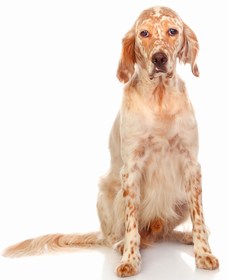 English Setter | 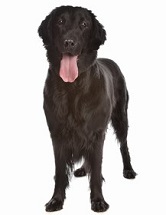 Flat Coated Retriever |  Irish Water Spaniel |


